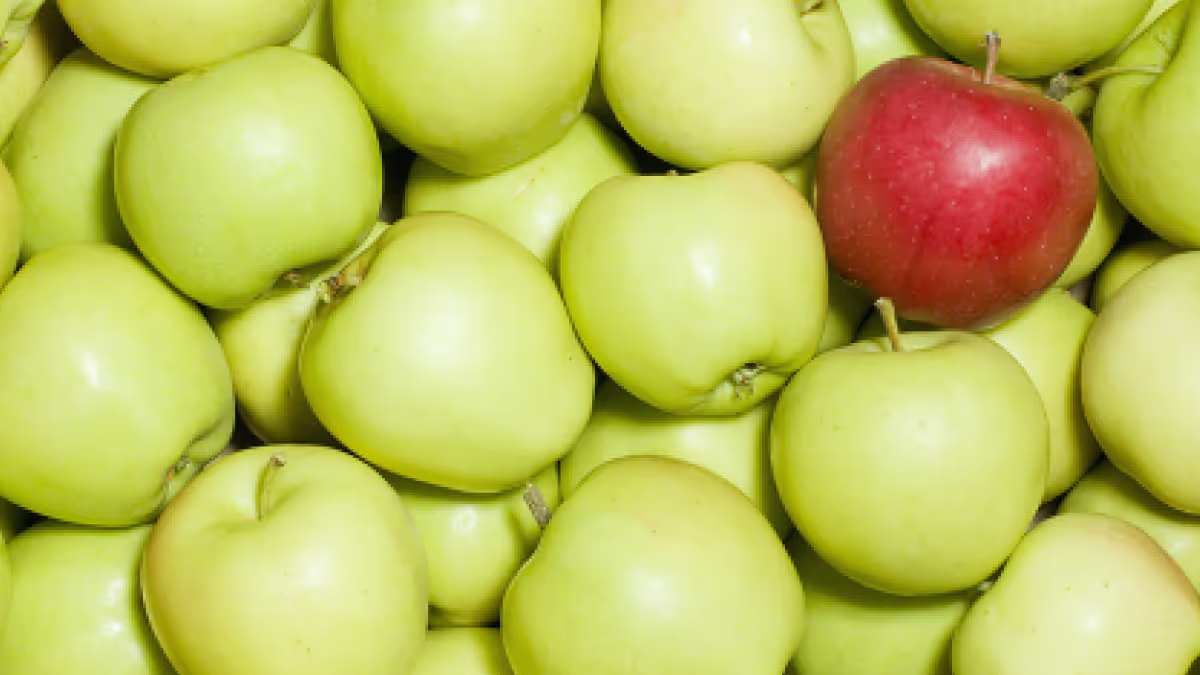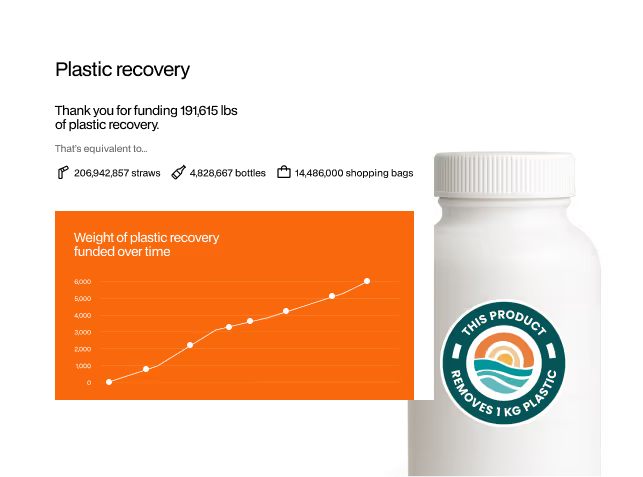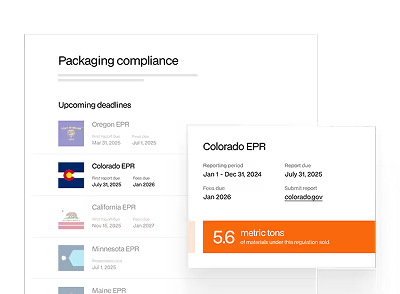Introduction
As brands increasingly focus on sustainability, reducing plastic usage has become a vital part of their strategies. But how can businesses actually achieve this? From innovative packaging solutions to supply chain optimization, there are multiple ways brands can significantly reduce their plastic footprint. In this article, we explore practical and impactful methods businesses can adopt to minimize plastic usage while maintaining operational efficiency and enhancing their brand value as a conscious and eco-friendly business.
For an in-depth look at why reducing plastic usage is a strategic business move, check out our related article: Why Reducing Plastic Usage is a Strategic Business Move
1. Direct Plastic Reduction: How Less Can Be More
Direct reduction means either completely eliminating or minimizing the amount of plastic in your packaging and products.
This could mean replacing plastic with a different material. Or removing the need for the material completely – sometimes there’s a non-essential function of the component that can be designed out or reduced. Doing this, plastic can sometimes be eliminated completely, or its percentage in packaging reduced. A classic example of direct reduction is the elimination of the plastic window in a pasta box. Who really needs to know what pasta looks like through that window in the box? We all have a pretty good idea of what penne might look like, and nine times out of ten, the box already has a picture of the pasta on it anyway! It can be eliminated altogether.
.avif)
.avif)
It may seem like a little component to do away with, but a little bit of plastic multiplied, quickly adds up to a lot! There are many new and innovative types of packaging entering the market (compostable packaging made of algae, anyone?!). Some innovations could be a feasible alternative for your products. Of course, there are always tradeoffs in the world of packaging (including environmental, practical, and financial), but we’ll save that for another time. Ultimately, choosing the right packaging material for your company should include an environmental impact consideration, alongside cost, quality for your product, etc.
Where plastic cannot be eliminated completely, minimization of plastic use might be possible. A word you will hear a lot when referring to minimizing is “light-weighting”. A well-known example of light-weighting has been done to minimize the amount of plastic in a soda bottle. The beverage industry has found ways to redesign a bottle to hold the same volume of liquid, but it has less plastic in it by weight. This means that less resources are used to make the bottles, and a smaller percentage of plastic goes to landfill, incinerators, or leaks into the environment. Light-weighting isn’t a perfect solution, but it is a good place to start – if your product doesn’t necessarily need to be in such a heavy plastic container. Maybe talk with your packaging suppliers and see what options they have?
Whether you completely eliminate plastic, or minimize the amount of plastic in your product’s packaging; both options will incrementally help you reach your reduction targets. Happy reducing!
2. Reuse Models: Designing for a Circular Future
Reuse models are on the rise.
If you want to improve your environmental impact and drive more circularity, reuse solutions are worth considering – if they can be applied to any of your products. Designing for reuse can be done in a number of ways, and this is a growing area, with technology developing rapidly. Staying up to date with new innovations is important in the world of packaging sustainability so you are aware of product-specific solutions coming on-line. Though don’t rule out the idea that you could be the one coming up with innovative ideas for a reuse model – unique to your specific product. There are lots of innovative individual solutions to be found across different sectors and product categories! There are four different types of reuse models to choose from, depending on your product:
- Refill from home. Example: cleaning concentrates that can be mixed with water and added to a reusable spray bottle
- Return from home. Example: having a milkman pick up your used glass milk jars while dropping off new ones
- Refill on-the-go. Example: refilling dry goods into your own containers at the grocery store
- Return on-the-go. Example: bottle deposit returns, clothing rental services that require drop off at a postal facility, bottle deposit returns

To help you consider which reuse model(s) might apply, here are some questions you can ask yourself when thinking about transitioning to reuse:
- Could we make our product into a concentrated version?
- Is there a way for consumers to refill the product packaging?
- Is there a way for consumers to return the product packaging (for example: free shipping return labels or localized drop off sites)?
- Can we reuse our packaging if sanitized, and do we have resources to sanitize them?
- Would we be creating other negative environmental impacts by implementing a reuse model (for instance, carbon emissions from shipping packaging back and forth)? What have other businesses tried successfully or unsuccessfully in my sector?
- When my reusable packaging does eventually reach the end of its life after a certain amount of uses, is there a way for it to be recycled, composted, or repurposed?
- Is my reusable packaging accessible to my target market?
An example of 'Refill on-the-go' is refilling containers at the grocery store. We can all learn a thing or two from the old milkman model of distribution and reuse. This is idealistic, but not always realistic. At rePurpose Global, we are optimistic that reuse models are the way of the future with a circular economy in mind. But we will not get there with a snap of our fingers. We will get there through collaboration, innovation, and trial and error. Have you created an innovative reuse model for your product? We’d love to hear about it!
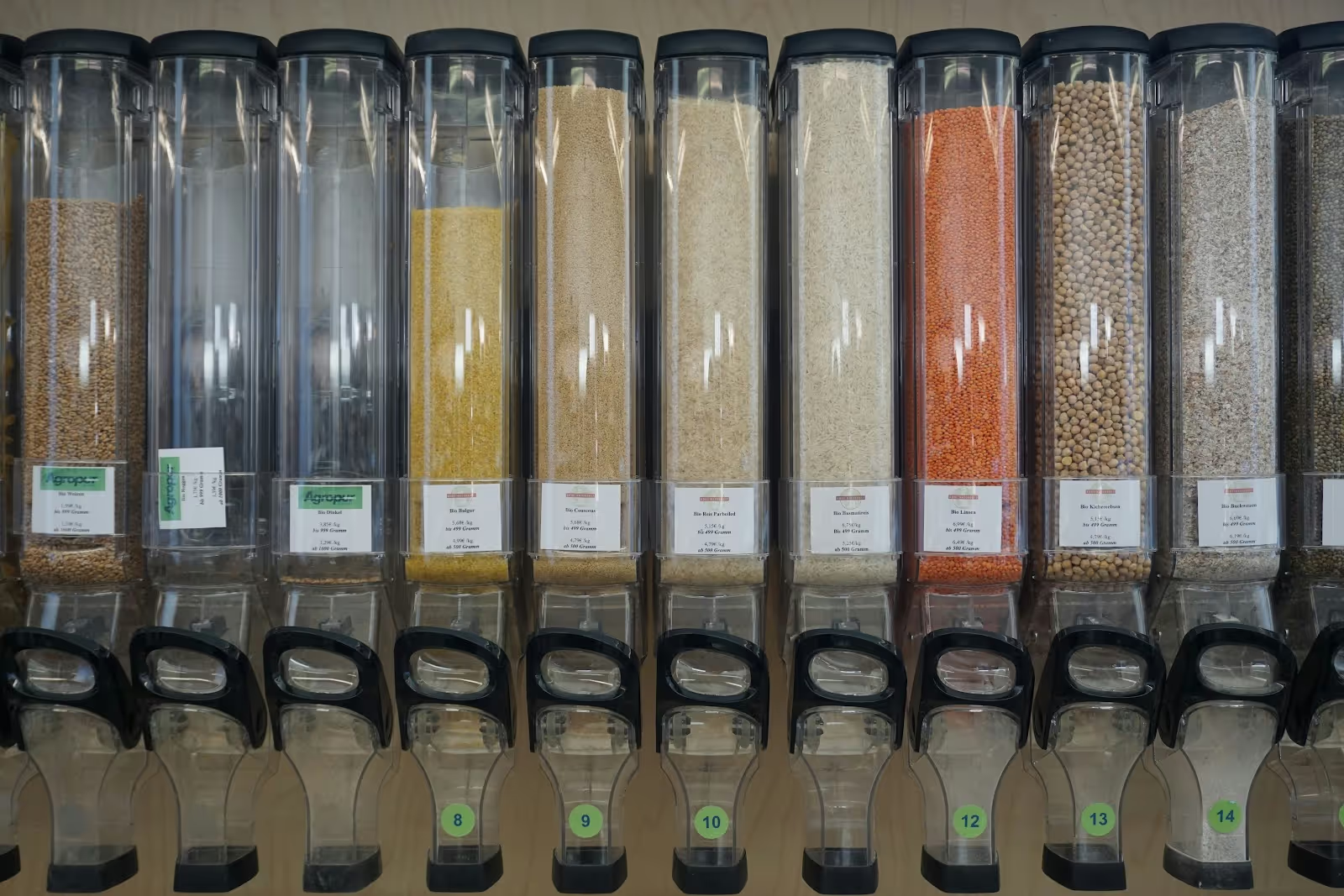
3. Designing for Recyclability: Giving Plastic a Second Life
Reducing plastic might not feel like a short-term option for your business.
If plastic is still necessary, designing for recyclability is a great step forward. Designing for recyclability will inherently reduce your low value, hard to recycle plastics - as these items cannot typically be recycled, or are downcycled if so. The more recyclable your packaging is, the higher chance it will not end up in landfills, incinerators, or the environment.
Recyclability can both increase the supply of materials for recycling (increasing circularity) and reduce plastic waste pollution. With plastic, typically it is more rigid plastics that have higher recyclability. PET, for example, is highly recyclable in many countries. Also, making sure that your packaging is made from just one type of plastic, instead of multiple polymers or multi-layered plastic, will help make it more recyclable.You may have heard about Sprite ditching its ‘iconic’ green bottles in favor of transparent plastic to increase their recyclability? If plastic is dyed, it can’t easily be turned back into clear plastic, so it’s less valuable for the overall market. With clear plastic more likely to be used as ‘post-consumer recycled’ (PCR) plastic, there’s a higher market value in its second life.
Designing for recyclability can be done with other materials too:
- Glass: Glass is highly recyclable, but has its downside due to its heavier weight, higher price and the energy required to recycle the material.
- Paper: Most paper or cardboard is recyclable or compostable across the US, but it can’t be recycled if it is covered in a heavy plastic film or tape - as some cardboard beverage containers tend to be.
- Metal: Metals, such as aluminum, are highly recyclable. Aluminum cans have a thin layer of plastic lining to protect beverages, but this doesn’t affect recyclability – some estimates say 75% of aluminum that’s ever been mined is still in use today. It takes high energy levels to mine aluminum, and so it is very important that it is recycled for the material to be an effective environmental choice.
If recyclability is something you can explore, here are some resources to guide businesses on the recyclability of their packaging: The Association of Plastic Recyclers, the How2Recycle Guide to Recyclability by Greenblue, and the “Golden Design Rules of Recyclability” for plastic packaging by Canada’s Plastic Pact. These resources dive deep into design choices that businesses can make in order to ensure the recyclability of their packaging. Following these guidelines might be the difference between your packaging ending up at a Material Recovery Facility with another chance at useful life, or ending up in a landfill or the natural environment.
4. Tradeoffs of Packaging Materials: Finding the Balance
Your packaging is how you introduce your product to consumers, and we know how important that is! Whether you are eliminating virgin plastic through PCR, bio-based content, or just switching out polymers to make it more recyclable, there can be new and exciting material properties that work for you, your product, and your brand.
There is an increasing amount of choice of packaging material. It can be confusing to try and choose the ‘right’ material for your products when there are so many options. We often get asked what the “best” material is, or the most sustainable material… sadly, there’s no perfect answer to that question (other than maybe no packaging at all, if you can swing it)! Every material has its own unique trade offs. Understanding what the trade offs are for specific materials can help to inform your reduction strategy.
So, how can a business understand the trade offs that exist when choosing their packaging? There are some useful data based tools such as a Life Cycle Assessment (LCA) that can help determine the environmental impact of your product’s packaging. Comprehensive LCAs can take into account carbon emissions & climate change, water usage, eutrophication, acidification, along with other emerging categories that assess issues such as human health, effects on biodiversity, etc. Life Cycle Assessments use real data to determine the closest approximate impact products may have. If your business has access to an LCA tool, this is a great way to assess the impacts and ‘trade offs’ created by different packaging material options.
If you don't have a tool like an LCA to assess tradeoffs, there are some basic considerations that can help to drive decisions. What is your business prioritizing (related to sustainability)? Some consideration for the most common materials used in packaging are below.
Glass: Glass has endless recycling potential, is completely non-toxic, and preserves the shelf life of products. Unfortunately, glass is one of the heaviest options available in the packaging world - and therefore has some of the highest shipping costs and shipping emissions, along with the high energy intensity of mining silica.
Metal: Aluminum and steel are great options because they have endless recycling potential, and are able to accommodate high levels of recycled content in most formats. Due to metal’s heavier weight than some other packaging options, it can have higher shipping costs and emissions from shipping. Mining metal is also highly energy intensive and the environmental impact of different formats of metal packaging can vary greatly.
Rigid Plastic (virgin): Rigid plastic typically has a higher recyclability rate than other plastics. However, it is made from fossil fuels which increases the carbon emissions factor.
Multi-layered Plastic (virgin): MLP is one of the cheapest options for packaging, but has some of the highest environmental and social trade offs due to its lack of recyclability, high emissions factors, leakage rates, and microplastic creation.
Post consumer recycled (PCR) plastic: PCR is a more circular option than virgin plastic. It has lower greenhouse gas emissions as it doesn’t require the ‘extraction’ phase. PCR has potential advantages in terms of consumer acceptance, and in some regions its use can help products and packaging comply with regulations. This being said; PCR can be more expensive, harder to find in a consistent supply (depending on what type of packaging needs you may have), can be less recyclable, and there can be challenges with achieving food grade packaging.
Paper / Cardboard: Paper is highly recyclable, and if treated correctly can be recycled up to seven times. It has lower transport costs and associated carbon emissions due to its light weight. There’s also high consumer acceptance of recycled paper and card, though paper packaging often offers lower product protection. Added plastic layers or films in paper packaging decreases its recyclability. It’s also worth noting that If not sourced responsibly, paper production can be devastating to forest ecosystems.
This is, of course, a really topline summary, and there are many other considerations to take into account when deciding on your packaging. Here’s a few more to keep you going: where the supplier is located, price point, compatibility with your machines, what is recyclable or compostable where your consumers live, and what your consumers expect.

What you choose to prioritize in your reduction strategy will partly depend on what you stand for as an organization: your mission!
Take a moment to consider what packaging options align with your organization’s values – and the values of your consumers. For a start, what does your organization stand for? Is there a mission and vision for your plastic action strategy that ties to the very core of the business? How do issues such as ocean protection, biodiversity loss, soil health, worker rights, or people and ethics rank for your brand?
Related to that, what are your organization’s sustainability goals? To be plastic-free? To drive circularity with PCR plastics and increased recyclability? Specifically to support bio-based solutions?
If these goals aren’t yet in place for your organization, then taking time to decide on your sustainability aspirations will inherently help drive the implementation of your plastic reduction targets.
Another important consideration when developing your reduction strategy is what your consumers care about. Maybe they are in favor of you going plastic-free (after all, ocean litter is the top environmental concern for customers in the USA and the UK). Perhaps it’s a general value of creating more positive impact for the environment. Or perhaps they would respond more to a positive impact for people around the world?
These are challenging questions to answer, as the quality of your product must continue to withhold even if packaging is changed. As we collectively push towards a more circular economy, companies like yours can challenge the status quo with innovative packaging designs and alternatives.
We know that your relationships with your suppliers are really important to you. Many businesses work very hard to source their materials from ethical or local suppliers; enhancing the sustainability of their supply chain.
Working closely with your suppliers to see what packaging alternatives to virgin plastic they might have available can be a great way to see what is possible for you in the near future. Your suppliers can help you understand price points, packaging specs, and what might work best with your machinery. Before creating your reduction strategy we recommend speaking with your current vendors – it can really help to inform decisions.
Brands that have an authentic mission will find it easier to know what decisions to make around plastic use. With this authenticity, customers will see that your plastic strategy is not an attempt to greenwash or get social media likes – it’ll be another example of the kind of positive action that the brand takes in the world. (But if you’re still figuring your mission/purpose out - that’s okay too - you’re not alone)!
If you are working on your plastic reduction strategy, check out our reduction strategy template.
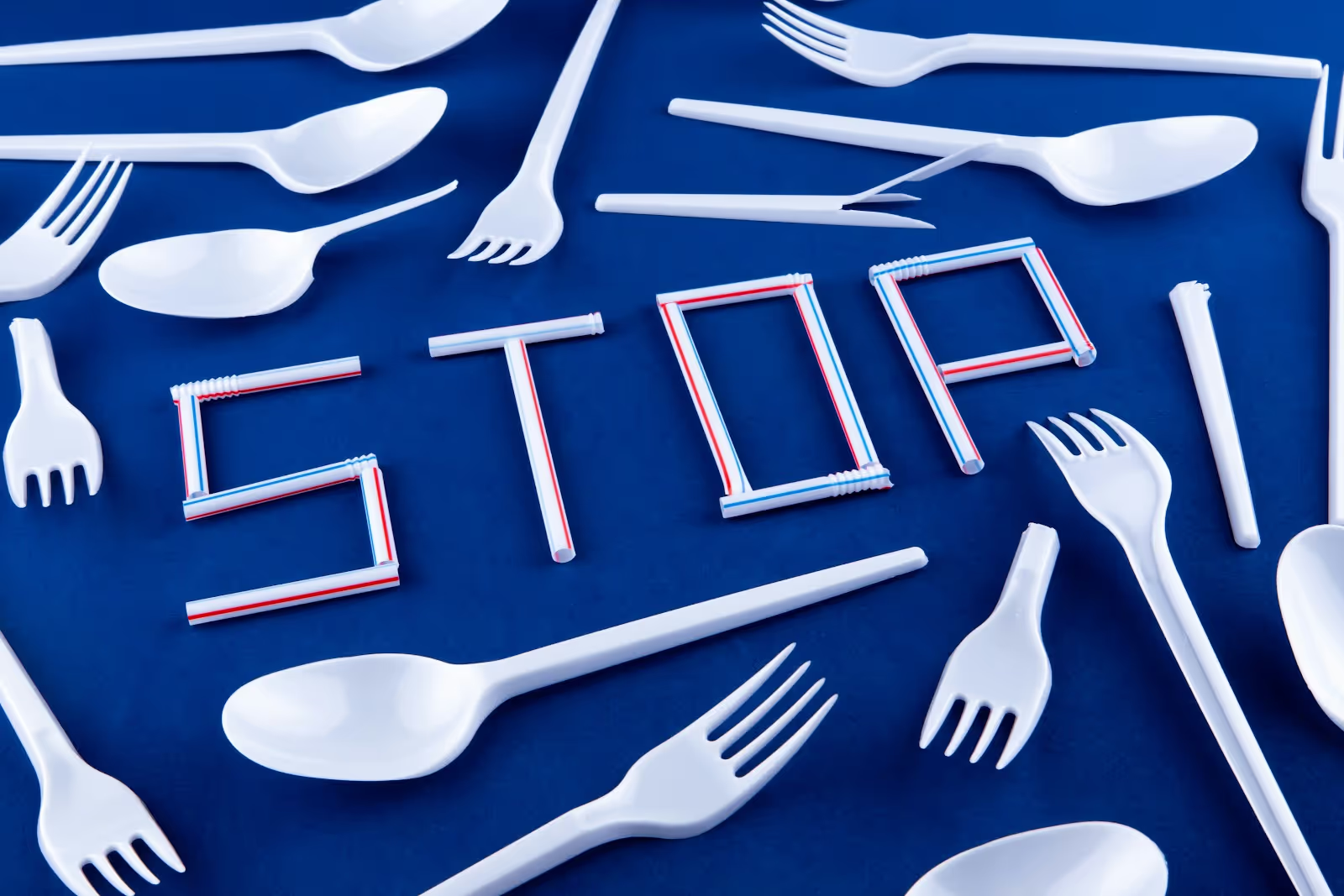
Conclusion
We have seen that reducing plastic is a strategic business move that can benefit the planet and business. By prioritizing plastic reduction strategies, brands can make smart business decisions, do more to protect the planet, future-proof their brand, prepare for packaging policies, and engage better with consumers.
This can all be achieved by making direct reductions to plastic use, or substituting materials for more sustainable or recyclable alternatives. Setting targets and creating a simple plastic reduction strategy is within reach of any brand.
However, we’ve also seen that these decisions are not always clear-cut. There are often trade-offs and complexities. That’s where your mission comes in and helps guide you to the unique strategy that works for your brand.
Reducing plastic in packaging is considered an “upstream” solution because it takes place near the beginning, or the top of the supply chain. Investing in plastic waste recovery and waste infrastructure development is considered a “downstream” solution because it happens near the end, or bottom of the supply chain. By pairing both upstream and downstream solutions as part of a plastic action strategy; businesses can be sure to affect as much positive change as possible in the fight to end the global plastic crisis.


.jpg)
.avif)
